1999 Nissan Terrano II Reviews
You'll find all our 1999 Nissan Terrano II reviews right here. 1999 Nissan Terrano II prices range from $4,730 for the Terrano II Ti 4x4 to $7,590 for the Terrano II Rx 4x4.
Our reviews offer detailed analysis of the 's features, design, practicality, fuel consumption, engine and transmission, safety, ownership and what it's like to drive.
The most recent reviews sit up the top of the page, but if you're looking for an older model year or shopping for a used car, scroll down to find Nissan dating back as far as 1997.
Or, if you just want to read the latest news about the Nissan Terrano II, you'll find it all here.
Nissan Reviews and News
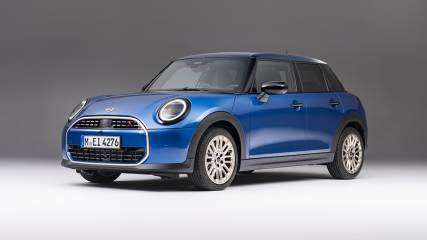
Tesla Model Y, MG MG4, BYD Dolphin and more new electric cars: Here's what EV money could buy you in petrol land | Analysis
Read the article
By Laura Berry · 23 Jun 2024
The cost of electric cars is coming down at last and it’s happening fast, too, with big brands slashing prices.
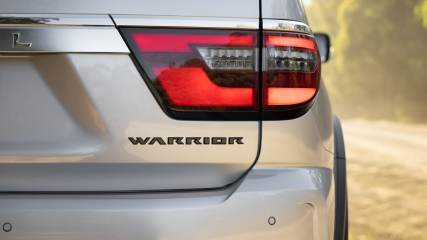
How Nissan and Premcar revived Australian manufacturing: What makes the 2024 Nissan Patrol Warrior capable of taking on the Toyota LandCruiser 300 Series GR Sport
Read the article
By John Law · 20 Jun 2024
The partnership between Nissan and Premcar started in 2018 birthing the first Navara N-Trek Warrior by October the next year. This project was followed up by a new Navara Warrior, based on the facelifted Pro-4X, which blossomed into the three-strong Warrior range available today.Far from Ford’s in-house Ranger Raptor program and Toyota’s Australian-focused – but not executed – HiLux GR Sport, Premcar’s take on tough off-roaders is keeping Australian manufacturing alive.We’ve been invited down to Premcar’s Epping manufacturing facility where Navaras and Patrols are stripped back and turned into Warrior products to see how this – now rare – Australian remanufacturing plant operates.So far, the partnership has produced a little more than 10,000 vehicles – 1500 N-Trek Warriors, 2000 Patrols and a combined 6500 Navara Pro-4X and SL Warriors. This is ongoing with 15-16 more examples rolling out of the doors each day.“It's been a very successful program for us, for Nissan, for the customers, for the dealer,” says Engineering Director and Premcar partner Bernie Quinn. “It’s not often you get win-win-win-win, so that has been really good and a really good company to work with.“One of the objectives of the program was to lift from being regarded as a challenger into more of a genuine competitor for the likes of Ranger and HiLux that are very well regarded in the market,” he said. A similar treatment has been carried out for the Patrol to make it a rival for the LandCruiser 300 Series GR Sport though it’s not as simple as ripping OEM parts off, binning them and buying new. There is careful planning to minimise excess spend and waste.The first step in the transformation of the Patrol starts in the cabin. Mottled wood-look trim pieces, the factory multimedia system and leather accents are all removed.The trims are refinished in gloss black, the accents swapped for ‘Warrior’ embossed Alcantara pieces and it gets the MY24 multimedia touchscreen. These tweaked parts are installed at the end of the production line.Next it’s wheels and tyres are swapped out for Premcar’s alloys and knobbly all-terrain rubber. The Navara SL’s standard steelies become dealer spare parts, the Pro-4X’s alloys are offered as dealer upgrades on regular SLs and the Patrol’s alloys go to the Middle East as spares. The suspension is where Premcar works most of its magic. The Patrol’s springs are sent to be recycle and replaced by heavy-duty front and triple-rate rear items increasing GVM by 120kg and improving road holding. Navaras get new dampers but Patrols keep their factory items. What does change is the Hydraulic Body Motion Control (HBMC). The fluid is dropped, newly-machined parts are attached to the head of the shocks and the reserved oil is then used to top the re-engineered system back off. To oblige the 21mm wheel/tyre lift, Premcar needs different arch liners. Again, instead of buying fresh items the originals are cut up, reshaped and put back to use to minimise waste and cost. Improving capability further is a modified front bumper – one of the key reasons the Warrior is based on the lower spec Ti – that improves approach angle to 40º. A signature red 'WARRIOR' insignia bashplate and two recovery points completes the package.The patrol Warrior’s pièce de résistance is the bi-modal exhaust with side-exit tips. The guts of the exhaust remain the same with the OEM system simply having a new valved pipe added locally. A made-in-Australia exhaust controller is fitted at the same time.It passes stringent drive-by noise tests, naturally, and while there's no button to force the flap open it will always give full noise in the seven-speed automatic's tiptronic mode. Sadly, there's no extra power yet – perhaps one day, says Premcar.This level of compliance, re-use of materials and factory five-year warranty is what makes the Warrior unique. These modifications could be fitted in the aftermarket but if you’re paying for labour the costs will be much higher. Additionally, a non-compliant aftermarket exhaust can land you in hot water with the constabulary.Within the production facility the quality control standards are equivalent to that of an OEM line with spot inspections and torque checks on fasteners. Of the 10,000 Warriors on the road, only two have had warranty claims according to Bernie, both for leaky dampers. The thing is, the Navara and Patrol are entering the end of their sales lives. The Warrior project has elevated Nissan’s standing in the ute and 4x4 segments yet replacements are on the way and negotiations will need to happen. Regardless of the next steps, Bernie and Nissan are excited by their achievements. “As soon as we started getting mentioned in headlines ‘Nissan’s Raptor competitor’, or ‘Nissan’s Rugged X competitor’ we’d ticked that box.“That was part of that objective; get it in the mind of those customers.”With the next generation Patrol and Navara, Nismo versions have already been confirmed by Nissan’s Vice president, Product Strategy & Planning Ivan Espinoza. He told CarsGuide that "Patrol Nismo is something we will keep building on. It was really well received," noting that the nameplate is likely to go beyond the Middle East this time around. Nissan’s newly appointed Managing Director of Oceania Andrew Humberstone was quick to say a Nismo would not be the end of Nissan AU’s relationship with Premcar.“The relationship we have is a solid one. When it comes to future product, it is not something we talk about openly, with full transparency , but we are in discussions with Bernie and the team about what we can do with future products,” says Mr Humberstone. “Nismo? I wouldn’t say . We’re looking at the Australian component and I think of the relationship we have with Bernie and Premcar, it’s the ‘made in Australia’ component that’s more important to us,” he added. It’s a sentiment echoed by Bernie. When asked if he thinks Premcar will be involved in next-gen product development, he said: “I not only hope so, I expect so. Because this has worked for everyone.“The counter to that is, if we get it wrong, then the whole thing can fall apart. So we’re doing everything within our control to make it as successful as possible so that we keep on doing it,” he said. The new gen Y63 Patrol and Navara were included in a teaser video announcing a 30 new models by the 2026 Japanese fiscal year, with the new Patrol and Navara expected sooner, by 2025. We will have to wait and see if Premcar and Nissan’s partnership continues in the new models but on the face of it, things look positive for more Warriors.

Nissan Qashqai 2024 review: Ti e-Power long-term | Part 1
Read the article
By Andrew Chesterton · 19 Jun 2024
The Nissan Qashqai e-Power is full of promises - a lower fuel bill, an EV-like drive experience without needing to plug in and recharge, all wrapped up a sleek, compact urban SUV. But does it live up to its claims? We put the Nissan Qashqai Ti e-Power to the long-term test to find out.
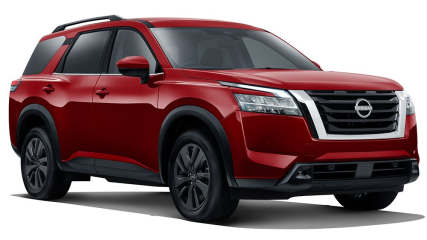
Family SUV now $11,000 cheaper: 2024 Nissan Pathfinder arrives with more choice to battle Toyota Kluger and Hyundai Palisade
Read the article
By John Law · 18 Jun 2024
Nissan has added a raft of more affordable options to its seven- or eight-seat Pathfinder large SUV range.CarsGuide unearthed the lower grade trims in government compliane documents in April with Nissan now following through for the Hyundai Palisade and Toyota Kluger rival.It lowers the start price a by $11,820 to $59,670 (before on-road costs) for the new front-wheel drive (FWD) ST-L trim or $64,170 for the all-wheel drive ST-L. There's a new FWD Ti trim for $67,990, too.Along with new variants, the existing Ti and Ti-L prices climb by $1000 despite no added equipment.“We have always wanted as many people as possible to experience Nissan’s adventure-ready family SUV and the reintroduction of the ST-L grade only expands the Pathfinder’s appeal further,” says Sriram Padmanabhan, Nissan Australia Marketing Director.There's the option to go down further to ST trim, but it seems Nissan has chosen to launch with ST-L as the new entry, which gets a generous amount of equipment.A set of 18-inch alloy wheels, auto LED headlights with highbeam assist, power tailgate, a 7.0-inch digital driver's display, head-up display, 9.0-inch multimedia touchscreen with wireless smartphone mirroring, heated front seats and cloth upholstery.The Ti, now available in front-drive and AWD, adds an auto-dimming rear view mirror, built-in rear sunshades, wireless smartphone charging, heated second-row seats, leather-accented upholstery and a 13-speaker Bose sound system.The flagship Ti-L is distinguished by 20-inch alloy wheels, second row captain's chairs, auto wipers, power-adjust steering wheel and passenger's seat, front seat ventilation, ambient lighting, larger 12.3-inch digital driver's display, panoramic sunroof and quilted semi-aniline leather upholstery.As before, all Pathfinders use a direct injection 3.5-litre petrol V6 developing 202kW at 6400rpm and 340Nm at 4800rpm. Nissan has not yet developed the X-Trail and Qashqai's e-Power hybrid technology for the Pathfinder.Both front- and all-wheel drive variants use a nine-speed automatic transmission. Towing remains capped at 2700kg braked.The revised Pathfinder range is available now with the Ti-L AWD flagship the only model delayed, expected to arrive in the fourth quarter of this year.All prices are before on-road costs.

Age is no barrier to sales success: Australia's oldest new cars like the Toyota HiLux, MG3, Mazda CX-3, Nissan Patrol and Toyota LandCruiser 70 Series are still popular
Read the article
By John Law · 11 Jun 2024
It’s easy to get swept up in the excitement of new-model releases. Lately, product cycles have been getting ever shorter with China in particular’s immense speed of design, development and production eschewing traditional carmakers' usual six, seven or eight-year model replacements.But that doesn’t mean everyone wants the latest and greatest and, in Australia, there remains a huge appetite for familiar nameplates like the Mazda CX-3, MG3 and Nissan Patrol despite fresher models being available in the same class. In fact, until this year, the now nine-year-old Toyota HiLux has dominated sales charts. It’s taken the ‘T6.2’ Ford Ranger over a year to usurp Toyota’s ute despite its much newer cabin, more powerful engines and fresher tech. Even still, the Ranger held a slim 210 sale margin over the HiLux in May. It’s a little easier to imagine how ute buyers – those after a dependable, rugged vehicle with less concern for the latest and greatest – might be less interested in buying the newest model.Though the media expected the CX-30 to become Mazda’s new entry-level SUV, the plan all along was to sell them side by side. At 10 years old, the CX-3 is no spring chicken any more yet with 1300 sales in may it remains firmly ahead of the Yaris Cross and Hyundai Venue in the light SUV class. It is, amazingly, still more popular than the CX-30 (1010 sales in May) as well. Entry-level Pure leads the way as a first-car option that is bigger than a Mazda2 but not unwieldy. Safety features like AEB and collision warning feature and the CX-3 is a known quantity for both reliability and parts availability. MG is finally replacing the MG3 as it celebrates its 13th year on sale – such age is very rare in cars from China. In its final 31 days in dealerships as a ‘new’ model, 1077 MG3s were registered. This puts it leagues ahead of the Mazda2 and Toyota Yaris. The same vintage Mitsubishi ASX may not be quite as popular as a CX-3 (842 sales in May) though like the others in this list, the ASX is having a bumper year of over 5000 sales – up nearly 30 per cent on 2023. Nissan sold 622 Patrol off-roaders last month for 3274 year-to-date. That may be less than half of Toyota’s LandCruiser 300 Series volume but when you consider the basic design is 14 years old (and therefore cost is long since amortised), Nissan is doing very well. Like ASX, the Patrol’s sales are up for 2024 as well, by an impressive 46.3 per cent. Put that down to demand for the new rough-and-tumble Warrior model. We couldn’t write this article and ignore the oldest car on sale today in Australia. Celebrating its 40th year in production and continuing to sell incredibly is the 70 Series LandCruiser range. An iconic vehicle for Australians who buy more of these things than any other nation – mining fleet is a huge part but a renewed popularity with the off-road crowd helps, too.Toyota’s old fourby may not get another ANCAP test any time soon but the new four-cylinder turbo-diesel will extend its sales life further as emissions regulations take hold. There were 1096 sales of the LandCruiser 70 Series in May for a total of 5030 this year, not including Troop Carrier body styles. Its enduring popularity is unlikely to end soon, either, with the new downsized diesel carrying the ageing Toyota into its next decade of sales.

Is this the biggest barrier to electric car adoption? Why price cuts to the Tesla Model Y, Tesla Model 3, Ford Mustang Mach-E, GWM Ora and Peugeot e-2008 show prices are too high | Opinion
Read the article
By Dom Tripolone · 02 Jun 2024
Change is in the air.Carmakers are starting to realise sky high electric car prices won’t cut it in the long term.Demand is dwindling in the giant European and US markets as the cohort of early adopters are now spoken for and it is becoming more challenging to tempt buyers away from cheaper petrol and hybrid vehicles.In the past few months several car makers have slashed prices on their slow - and not so slow - selling electric cars in Australia.Peugeot cut the price of its e-2008 small electric SUV by more than $20,000 to $39,990 drive-away. Only a few days later the company had sold all its remaining stock and the car won’t be on sale until the updated version arrives early next year.Tesla has slashed the price of its Model Y SUV and Model 3 sedan several times since the start of April to $55,900 (before on-road costs) and $54,900 respectively.An entry-level Model Y was $65,400, and the same Model 3 was $61,900 - meaning a $9,500 discount on the Model Y and a $7000 saving on the Model 3.That’s a big discount on the two best selling electric cars in Australia by a wide margin.Nissan has axed about $16,000 off the price of the slow-selling Leaf, which now starts at $39,990 drive-away with the longer range e+ model $49,990 drive-away.Ford announced on Friday cuts between $7000 and $8000 of its Mustang Mach-E electric SUV range.It now starts at $64,990 for the base Select grade, $79,990 for the Premium variant and $97,990 for the potent GT version.Ford already lopped up to $7000 off the Mach-E before it went on sale in December last year.Ford Australia boss Andrew Birkic said: “These price reductions offer even greater value to our customers and it makes these great vehicles an option for more people.”Subaru made a similar move with its Solterra, knocking up to $8000 off the price before a vehicle was even delivered to customers.GWM has discounted its Ora small electric hatchback and Renault has generous deals for its Megane E-Tech EV, too.These EV discounts are no longer an isolated incident and are a direct response to cooling customer demand and increasing competition.Luxury carmakers have been struggling to sell their EVs in big numbers too compared to their petrol-powered equivalents.These trends show that outside of early adopters consumers are finding it hard to justify spending the circa-$20,000 price premium for an EV compared to a petrol or even hybrid models.Sales of EVs were down five per cent in April, but are up 32 per cent for the year. That sounds good until you factor in EV sales were up 130 per cent in 2023.By comparison hybrid sales are up more than 130 per cent this year. Car makers such as Hyundai, Kia and Nissan are adding more petrol-electric versions of their cars to feed this demand.Most states wound back their EV incentives at the start of this year but the Federal Government's very generous FBT exemption on EVs should be spurring higher demand.Carmakers finding it hard to move their EVs now are in for a tough time as a wave of Chinese electric brands are set to wash over our roads in the next 12 months.These include GAC, Leapmotor, Smart, Xpeng, Zeekr and more.China has the tech and manufacturing advantage to undercut conventional cars brands. China is the leading producer of batteries and is the closest to bringing the game-changing solid-state batteries to market.These solid-state packs are considered the silver bullet for mass EV adoption. They are smaller, lighter, more energy dense, faster charging and safer than today’s lithium-ion units.They have the capacity to make their cars cheaper than others and they have insanely short life cycles, meaning they can upgrade and improve their vehicles in much shorter time than legacy carmakers.Help is on the way, though.Established carmakers are now preparing to roll out an array of cheap, small EVs targeted at the everyday driver.Volkswagen is the latest brand to confirm it’ll build a circa-$30,000 EV with its coming ID.1 hatchback.That price puts it in the same ballpark as an entry-level Mazda3 or a fully-loaded Mazda2.Jeep and Citroen are rolling out little EVs at a similar price and Kia will launch the EV3 small electric SUV in Australia next month.Kia and Hyundai both have mini EV SUVs in the works with the EV2 and Casper.These kind of cars will have a knock-on effect and will lead to cheaper used electric cars too, which will again spread the zero-emissions motoring to new sectors.The people have spoken: the only true barrier to EV adoption is the high prices but carmakers are listening and help is on the way.
.jpg)
The best electric hatchbacks in Australia
Read the article
By Stephen Corby · 31 May 2024
Electric cars come in all shapes and sizes these days, but arguably the most logical shape is the hatchback. Why? Well, as much as Australians love SUVs and bigger luxury cars, the humble hatch makes the most efficient use of space. And if you’re going to buy an electric car, it makes sense to be concerned about efficiency.Thankfully, in contrast with an overall decline in the small-car market, there is an increasingly diverse range of battery-powered hatchbacks to choose from. The list of hatchback electric cars is getting longer each month with new brands jumping into the fray.And while space and size are key attractions of the electric hatch, there is another element that makes them popular - price. At the time of publication the most affordable electric car you can buy is an EV hatchback, opening up the nascent market for more people.One excellent example is the much-praised MG4, which has emerged not only as one of the better selling EVs in the country but is on track to be one of the most popular small cars over all. In 2023, it out sold the likes of the Subaru Impreza and Honda Civic and is trending upwards in 2024.Yet another reason why electric hatches are gaining popularity in Australia is availability, with those willing to look beyond an SUV discovering a good supply of electric hatchbacks in Australia.This is because of the volume of choice and diversity of models, with at least eight examples already in showrooms and more planned to follow in the near future.The biggest questions are what is the future of electric hatchbacks expected to look like in Australia?The answer to the question is more choice for smaller, more affordable EVs, but there is also likely to be more crossover between a true hatchback and a modern crossover. Models like the Renault Megane E-Tech and Volvo EX30 blur the lines between a hatch and an SUV but that appears to be a future trend.One key element missing from the market is a Tesla hatchback, and that would be a potential game changer. The American brand has repeatedly hinted at adding a hatch, likely to be known as the Model 2, as a cheaper offering to sit beneath the Model 3 sedan.In the shorter-term there are several new EV hatches likely to be hitting Australian roads in the not-too-distant future, including the Volkswagen ID.3, Peugeot e-208 and Renault 5 E-Tech.Not that we need to gaze longingly into a crystal ball to look for the next small EV. Below is a list of the best electric hatchbacks on the Australian market at the time of publication.Ranking the list of available electric hatchbacks by price is no easy task thanks to the highly competitive nature of the market at this moment in time.MG announced its small car would be the cheapest EV at $39,990, only for BYD to undercut it within days, and then GWM joined the party. It only gets more confusing thanks to a series of drive-away deals, such as the one GWM is currently (at time of publication) offering on its (not-at-all-a-Mini-why-do-you-ask) Ora small car.Its original asking price of $39,990 drive-away has been slashed to $35,990, making it the cheapest EV you can buy. For the money, you get up to 310km of driving range on a single charge and 126kW of performance.If you’re looking to Build Your Dreams of an electric car on a budget, then the Dolphin is for you. It arrived with a bang, sporting the lowest sticker price of any EV in Australia by starting at $38,890, which undercut the Ora and MG4 by $100 - at least on paper, at the time. However, the Chinese brand is offering a drive-away price of $41,490, which makes it more expensive than the GWM and MG in this current price war.For that money you get a Dolphin Dynamic, a small car with space for five, a 70kW/180Nm electric motor and a battery good for 340km of driving range. There’s a Dolphin Premium, with a 150kW/310Nm motor and 427km of range (plus bigger wheels, two-tone paint and other extras) but that’s an additional $6000.The price of the MG4 is another moving target in the battle for affordability being fought out amongst the three Chinese carmakers. It has floated up and down, reaching as low as $39,990 drive-away for the run-out sale of 2023 examples, but was sitting at $43,131 drive-away for the 2024 model at the time of publication.It’s a spacious and practical small car, with 350km range from its 51kWh battery and a 125kW motor for the entry-level Excite 51 model that has the sharpest price.There are three more variants in the range, the 64kWh and 77kWh standard models and the MG4 XPower electric hot hatch. The latter boasts impressive performance credentials, with 320kW/600Nm and 400km of range for $63,973 drive-away.The fully electric hatchback that arguably started it all, the Leaf was the first mainstream small EV hatchback that was broadly accepted in the local market (with apologies to the Mitsubishi i-MiEV) way back in 2012, when the Tesla Cybertruck wasn’t even a glint in Elon Musk’s mad eyes.Even though a second-generation model was introduced in 2018 (which was largely a makeover) the Leaf is starting to show its age in terms of both design and technology.The standard model is equipped with a 39kWh battery that’s only enough for 270km of range and it powers a 110kW motor. There’s a more powerful Leaf+ available, which gains a 58kWh battery to boost range to 385km.Its official list price is $50,990, but in a bid to keep up with its newer competition, Nissan Australia is offering it for $39,990 drive-away for the standard model and $49,990 drive-away for the Leaf+.If you’re looking for a truly compact electric car then look no further than this pint-sized city runabout. Fiat has managed to keep the tiny dimensions of the petrol-powered 500 and package up an all-electric powertrain inside a stylish small car.It’s not a cheap proposition at $52,500 plus on-road costs, which makes it a premium EV by many standards, but it is well-equipped for the price and does give you a more upmarket feel than most of the cars on this list.It doesn’t have a particularly powerful motor, just 87kW/220Nm, but it certainly feels zippy on the road. Being so small it can’t fit lots of batteries, so the range is limited to just 311km, which does limit it to being more of an urban EV rather than something for long-distance drives.If you like the Fiat but want something sportier, you can consider the Abarth 500e. The Italian brand’s performance division has wound up the power to 113.7kW/235Nm and added a sound generator for a more exciting driving experience.It carries a price premium, too, starting at $58,990 (plus on-road costs) for the Turismo and $60,500 for the Scorpionissima variant.The British brand may not be thought of in the same sentence as Tesla and Polestar, but it is surprisingly ahead of the curve when it comes to EVs. It has just launched its second-generation electric Cooper hatch with an electric Countryman and Aceman to follow soon.It’s arrived with a sharp $59,830 drive-away price for the Cooper E and $65,040 for the more potent Cooper SE, no doubt helped by the brand’s decision to share development and production with GWM.The Cooper E boasts 135kW and a 305km range, with the Cooper SE boosting those numbers to 160kW and 402km.While Volkswagen awaits its first EVs, its Spanish off-shoot is already leading the way with its electric hot hatch. While it’s significantly more expensive than the first cars on this list, it comes with more features, equipment, performance and range to help justify the extra ask.Key amongst its performance credentials is the fact it’s rear-wheel drive, something few other hatches can claim. It’s powered by a 170kW/310Nm motor to provide hot-hatch levels of speed and has a 82kWh battery that provides an impressive 511km of claimed driving range.
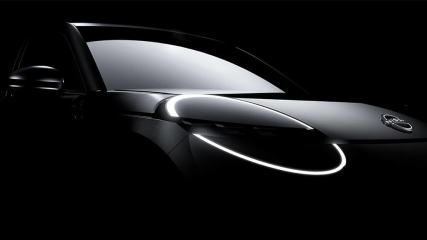
"It caught us by surprise": Nissan looking for government concessions to help drive electric car demand and ease pressure from 2025 New Vehicle Efficiency Standard (NVES) timeline
Read the article
By James Cleary · 31 May 2024
The Federal Government’s commitment to introduce a ‘New Vehicle Efficiency Standard’ (NVES) from the beginning of 2025 has generated a lot of heat in the Australian new-car business.
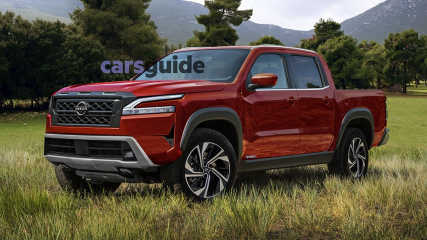
"The truck has to be credible in market. No Debate": 2025 Nissan Navara heading for hybrid and leaf spring rear end in co-development with Mitsubishi Triton to challenge Ford Ranger, Toyota HiLux and Isuzu D-Max
Read the article
By James Cleary · 28 May 2024
After a decade in market, sales of Nissan’s current, fourth-generation (D23) Navara ute have fallen to a fraction of those recorded by category leaders like the Ford Ranger, Toyota HiLux and Isuzu D-Max.
.jpg)
Nissan Patrol 2024 review: Warrior Ti
Read the article
By Mark Oastler · 26 May 2024
The Nissan Patrol is an evergreen offering in the Australian large SUV/4WD market with dedicated fans loving its comfort, off-road ability and effortless naturally-aspirated V8 performance. Mark Oastler has been spending time with the Warrior Ti, a more adventurous locally re-engineered model, to see how it stacks up as day-to-day family transport.




